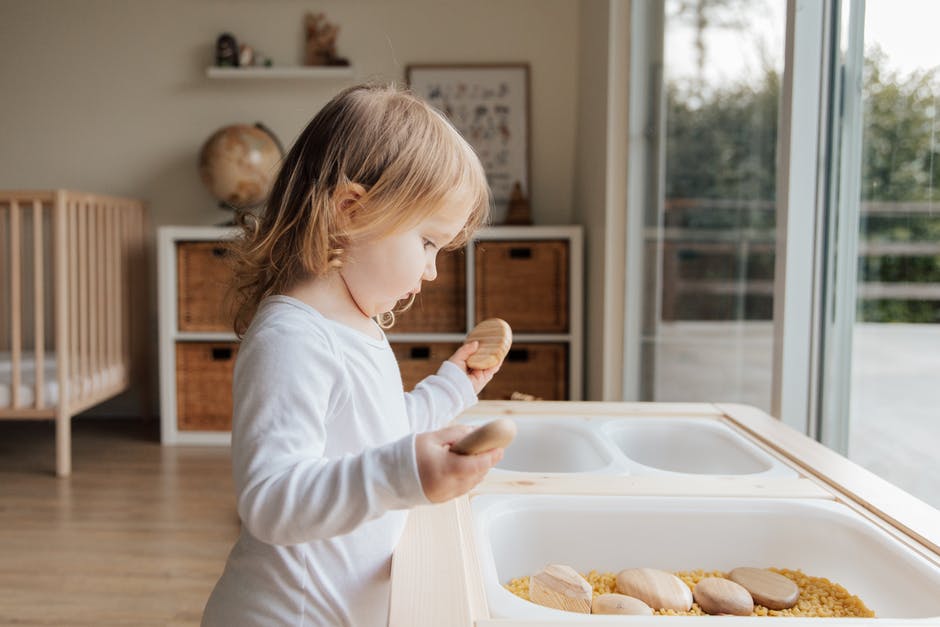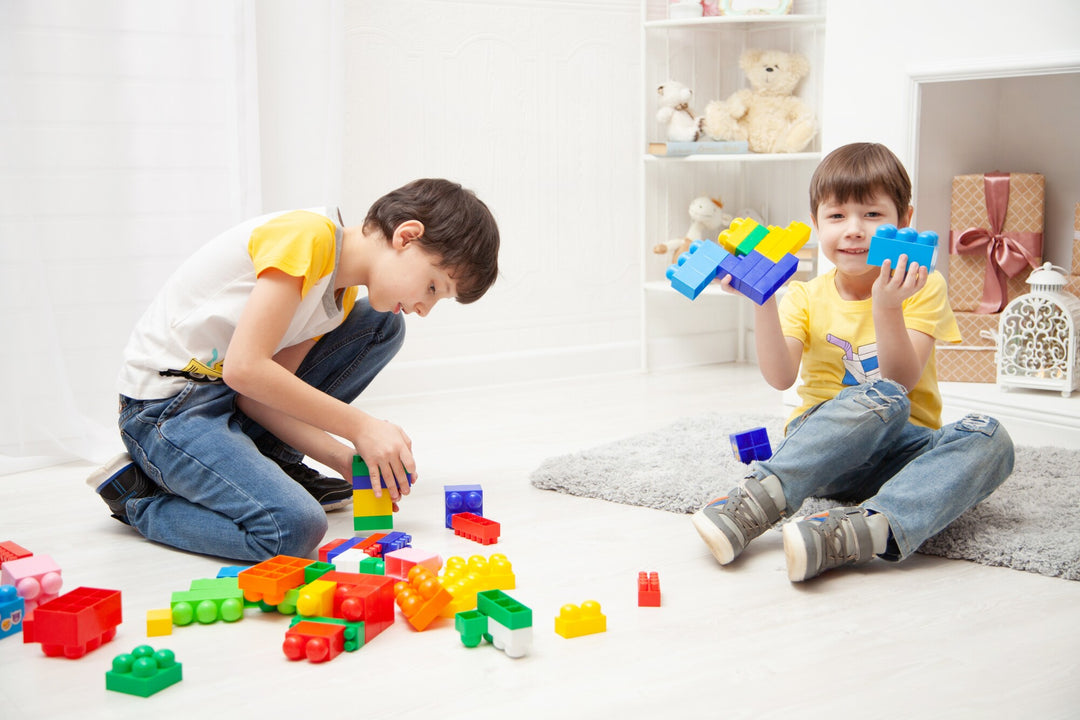Autism Awareness Month: Tools to Support Those with Autism
April marks Autism Awareness Month, a time to promote understanding, acceptance, and support for individuals on the autism spectrum. At Sensory Assist, we believe in creating an inclusive world where people with autism are empowered to thrive in their own unique ways with the right tools and environments to support them.
Autism is not a condition to be “fixed” but a neurological difference that affects how a person experiences the world. This month is about more than just wearing a colour or sharing a post, it's about listening, learning, and offering meaningful support.
One of the most practical ways to support someone with autism is by providing tools that meet their individual needs. Whether those needs relate to sensory regulation, communication, concentration, or emotional wellbeing. In this blog, we’ll explore what autism is, the types of challenges individuals might face, and some of the most effective tools that can offer support in daily life.
What Is Autism?
Autism, also known as Autism Spectrum Disorder (ASD), is a developmental condition that affects communication, behaviour, and sensory processing. Autism exists on a spectrum, which means every individual experiences it differently. There is no one-size-fits-all.
Some common characteristics may include:
-
Sensory sensitivities (to sound, light, textures, movement, or smell)
-
Difficulties with verbal or non-verbal communication
-
Preference for routines and predictability
-
Challenges in social interaction or understanding social cues
-
Intense focus on specific interests or topics
While these traits can present challenges, they also come with strengths. Attention to detail, strong memory, creativity, and honesty, to name a few.
Why Sensory Tools Matter
Many individuals with autism experience sensory processing differences, meaning their brains interpret sensory input in ways that may be more intense (hypersensitive) or less responsive (hyposensitive) than others.
This can affect how they feel in noisy classrooms, crowded shops, or even while wearing certain fabrics. Sensory tools help bridge the gap between the environment and the individual, offering ways to regulate emotions, stay calm, and feel more in control.
Supportive Tools for Individuals with Autism
Here are some of the most effective and accessible tools to support individuals on the spectrum in daily routines, learning environments, and social situations:
1. Noise-Reducing Ear Defenders

Many people with autism find certain sounds overwhelming or even painful. Whether it's the hum of fluorescent lights, loud school bells, or unpredictable background noise.
Ear defenders help block or soften environmental noise, creating a more comfortable and calm space for concentration or transition.
Benefits:
-
Reduces sensory overload in noisy environments
-
Helps with focus in classrooms, public spaces, or during travel
-
Can be worn proactively or during specific stressful moments
2. Visual Schedules and Timers

Transitions and changes in routine can be difficult. Visual supports provide clarity, reduce anxiety, and help individuals prepare for what’s coming next.
Tools like visual schedules or countdown timers are especially helpful for supporting time management and transitions between tasks.
Benefits:
-
Promotes independence through structure
-
Reduces the stress of uncertainty
-
Enhances understanding for visual learners
3. Chewable Jewellery

For individuals who seek oral sensory input, chewable jewellery offers a safe, discreet, and age-appropriate solution. Chewing helps with self-regulation, focus, and stress relief.
Benefits:
-
Satisfies oral sensory needs in a safe and hygienic way
-
Can help reduce anxiety and improve attention
-
Designed to be both durable and discreet for everyday use
4. Weighted Products
Deep pressure input can have a calming and grounding effect, particularly for individuals who experience high levels of anxiety or sensory overwhelm.
Items like weighted blankets, lap pads, or shoulder wraps provide that pressure, helping the nervous system relax and feel more at ease.
Benefits:
-
Supports better sleep and relaxation
-
Helps regulate the nervous system during stressful moments
-
Enhances concentration and comfort during seated tasks
5. Wobble Cushions and Movement Supports

Sitting still for long periods can be uncomfortable for some people with autism. Wobble cushions and chair bands allow for subtle, controlled movement, helping maintain focus without disruption.
Benefits:
-
Improves posture and core stability
-
Allows for movement without leaving the seat
-
Helps maintain engagement during reading, lessons, or meals
6. Fidget Tools
Fidgeting is a natural form of self-regulation, and when supported with the right tools, it can enhance rather than disrupt attention. Fidget toys offer a simple outlet for busy hands and can be especially helpful during moments of stress or high concentration.
Benefits:
-
Reduces restlessness and promotes calm
-
Helps with transitions and waiting periods
-
Ideal for use at school, home, or on the go
7. Sensory Play and Tactile Tools
Sensory exploration can be both calming and developmental. Items like sensory bins, textured toys, or kinetic sand can help children regulate emotions and explore different textures in a controlled way.
Benefits:
-
Encourages play-based learning
-
Helps with emotional expression and creativity
-
Provides sensory feedback in a safe environment
Personalising the Approach
It’s important to remember that every person with autism is different. What works for one child or adult may not work for another. The key is to:
-
Observe what environments, sounds, or textures they respond to
-
Offer choices and flexibility
-
Let the individual lead, especially in moments of overwhelm
Support doesn’t always mean “doing more”. Sometimes it’s about removing barriers and providing the right tools at the right moment.
Tips for Everyday Support
Here are a few practical tips that can be implemented at home, school, or in the community:
-
Prepare for transitions – Use countdowns, timers, or social stories to ease anxiety.
-
Offer quiet spaces – Create a sensory-friendly nook with soft lighting, calming tools, and minimal distractions.
-
Keep a sensory toolkit handy – Include fidgets, chewable items, or ear defenders in a small bag for outings.
-
Celebrate strengths and interests – Use their passions as a gateway to build skills and boost confidence.
-
Be patient and listen – Communication may look different, but all behaviour is a form of expression.
Autism Awareness is Ongoing
Autism Awareness Month is an opportunity to open up important conversations, but inclusion, understanding, and support should happen every day.
By offering the right tools and embracing the diverse ways people experience the world, we make space for everyone to feel safe, valued, and supported.
At Sensory Assist, our mission is to help individuals on the spectrum access tools that bring comfort, focus, and independence. Whether it’s through sensory-friendly products or daily routines that honour individual needs, we’re here to walk alongside families, carers, and educators with practical solutions that make a real difference.













